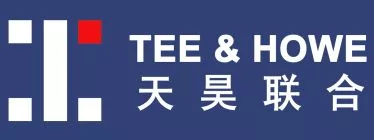The 4th revisions to the CN Patent Law was passed in Oct 2020 (the Law 2020). My article on this is available below:
https://www.linkedin.com/pulse/4th-amendments-chinese-patent-law-toby-mak/
On 27 November 2020, the CNIPA published the 1st draft of the revisions to the Implementation Rules of the Law (the draft Rules). Again, a a co-chair of the IP Practice in China committee of the AIPLA, comments on this 1st draft has been submitted on behalf of the AIPLA. The draft Rules introduced many significant changes, revealing that the Chinese patent practice is heading to a direction closer to the international norm. These welcomed changes will be discussed as below, together with my thoughts.
On the other hand, according to the stipulation in the 3rd revisions to the Law in 2010, it is likely that all of the proposed changes in the draft Rules are only applicable to patents with a effective filing date on or after 1 June 2021 (including PCT national phase entries into China after 1 June 2021), the date when the Law 2020 comes into force.
Patent term extension (PTE) for patents directed to new drug
First of all, it should be noted that the Law 2020 recites that PTE is to be compensated for time to obtain marketing approval of a new drug, and impose the following limitations:
- The 5-years limitation - The compensation is not more than 5 years.
- The 14-years limitation - The total effective patent term after the new drug has obtained marketing approval in China is not more than 14 years.
Examples illustrating the above limitations are included below.
According to the draft Rules, PTE can only be applied for after the new drug has obtained marketing approval, specifically to apply for PTE at the CNIPA within 3 months from the date of the marketing approval in China. There is no clear recitation whether the subject patent has to be in force when the PTE application is filed, but it would be counter-intuitive if the patent has already lapsed at that time. Whether the patent is lapsed could be easily determined by the status recorded at the CNIPA, as the CNIPA is particularly cautious about status recording, and will only record the status beyond all possibility of revival (including validity, deemed withdrawal of an application, and lapse of a patent due to non-payment of annual fee).
In the draft Rules, PTE covers drugs patents protecting pharmaceutical chemicals, compositions, biological products, and traditional Chinese medicines (TCM). It seems to imply that processes of preparation and medical uses (for all three of the above) are also included. However, the language is unclear and it could also be interpreted to mean that the PTE for processes and medical uses patents are applicable to TCMs only. In the comments submitted, clarification on this has been sought. My view is that PTE could be obtained for patents directed to chemical, biologic, composition, processes of preparation and medical uses (in Swiss-type claims, as method of treatment is still not patentable in China)
The requirements on PTE in the draft Rules are as below:
- Where a drug relates to more than one patent at the same time, the patentee may request the supplement for drug patent term for only one patent.
- Where a patent relates to multiple drugs at the same time, only one drug can make a claim for the supplement of the drug patent term.
- The patent has not yet been supplemented for regarding the drug patent term.
- The remaining protection period for the patent, for which supplement for the patent term of the drug is requested, shall not be less than six months.
I termed the requirements 1. and 2. above as "one drug, one patent; one patent, one drug" mechanism. With this requirement, particular in light of 2., it may be sensible in China to file multiple patent applications with different filing dates, each covering a specific drug (even with different dosages) to obtain the PTE extensively, provided that there is prospect for the applications to be granted.
Requirement 4. is to fulfill the 14 years limitation in the Law 2020, as according to the draft Rules, the PTE is calculated as below:
- Date of drug marketing approval – patent application date – 5 years
It appears that the above assumes that drug marketing approval will not be granted within 5 years from the patent application date.
For example, for a drug patent of filing date 10 June 2021, the original maximum patent term is 10 June 2041. If the relevant drug approval is granted on 10 June 2032, then 6 years PTE is to be granted. Due to the 5 years limitation in the Law 2020, the patent term could only be extended to 10 June 2046. This provides 14 years of effective patent term after the new drug has obtained marketing approval in China, just within the 14 years limitation (but disputes on one day of patent term extension may still arise, as that one day may worth hundreds of millions of RMB).
For the same drug drug patent of filing date 10 June 2021 as above, but a different relevant drug approval date of 10 June 2030, then PTE of 4 years should be granted, extending the patent term to 10 June 2045. However, due to the 14 years limitation, the patent term could eventually be extended to 10 June 2044 only.
Allowing restoration of priority claim.
China has long been "criticized" of not allowing this (To me, this is just a matter of choice. Many other countries including Japan also do not allow restoration of priority), but this may change in the foreseeable future.
It is not sure whether such restoration would be available as-of-right, or have to demonstrate that due care has been taken, as in Europe, in order to restore the priority claim. Or whether this may adopt the US approach in that some explanation has to be given but not to the due care level as required in Europe.
My guess is that China may adopt the US approach. Let's wait and see.
Allowing the practice of incorporation by referencing to the priority document(s).
This is another practice that China is going to adopt. It could be good news to we patent attorneys, as sometimes mistakes beyond our control happened. It is believed that this would extend to PCT national phase entry into China.
The draft Rules stipulate that such incorporation would not affect the filing date in China. However, the following limitations should be noted:
- Such incorporation has to be filed with 2 months from the CN filing date, or by a deadline specified by the CNIPA.
- The incorporation can be directed to either the claims or the description.
- The incorporation could not be directed to figures. That is, for example, if a figure is missing but exists in the priority document document, adding back the missing figure would affect the filing date in China.
Patent term adjustment (PTA) due to unreasonable delay at the CNIPA
Unlike the US, PTA does not come automatically in China, but a specific request has to be filed at the CNIPA within 3 months from the date of grant of the Chinese patent.
The draft Rules do not specify what would count as unreasonable delay. Instead, the draft Rules only specify the below are not unreasonable delay:
- CNIPA's office actions are not responded to within the specified deadline.
- Delay for examination has been requested.
- Incorporation by reference has been invoked.
- Procedures at the CNIPA has been suspended due to specific disputes, mainly due to ownership disputes.
While 1., 3., and 4. above are reasonable, it is not clear why 3. is considered to be excluded from unreasonable delay. Any insights will be welcomed.
For 1., it is reasonable to expect that the specified deadline does not include the 2-month extension that could be obtained as of rights.
Further, the draft Rules do not specify what information the patentee has to submit when requesting the PTA. It can be imagined that if only a simple request is required, then every patentee is going to file this PTA request (at least this would be my advice). If this is the plan, requiring the patentee to file a specific PTA request would only increase procedural workload at the CNIPA.
On the other hand, the draft Rules do not specify how the unreasonable delay would be calculated, for example, whether the first office should be issued with a certain period of time after an application enters the substantive examination stage, and the days after this period should be compensated to the PTA. If the patentee is required to submit substantive calculation and proof showing the delayed days for PTA, without information on how the unreasonable delay would be calculated, the patentee has no way to do so.
Let's see how this would play out in the next draft.
Allowance of the use of electronic signature
While this is already in practice, such is now specified in the draft Rules. According to the current practice, this refers to scanned copy of an actual signature, but not a mere notification that a signature has been applied. Electronic signatures on scanned copies of Powers of Attorney and Assignments have been accepted readily.
However, for documents recorded at the CNIPA for repeated use, for example General Powers of Attorney and Assignments reciting multiple Chinese patents/applications, original signatures are still required.
The next article will talk about revisions that raise concerns in the draft Rules.
The content of this article is intended to provide a general guide to the subject matter. Specialist advice should be sought about your specific circumstances.
We operate a free-to-view policy, asking only that you register in order to read all of our content. Please login or register to view the rest of this article.


